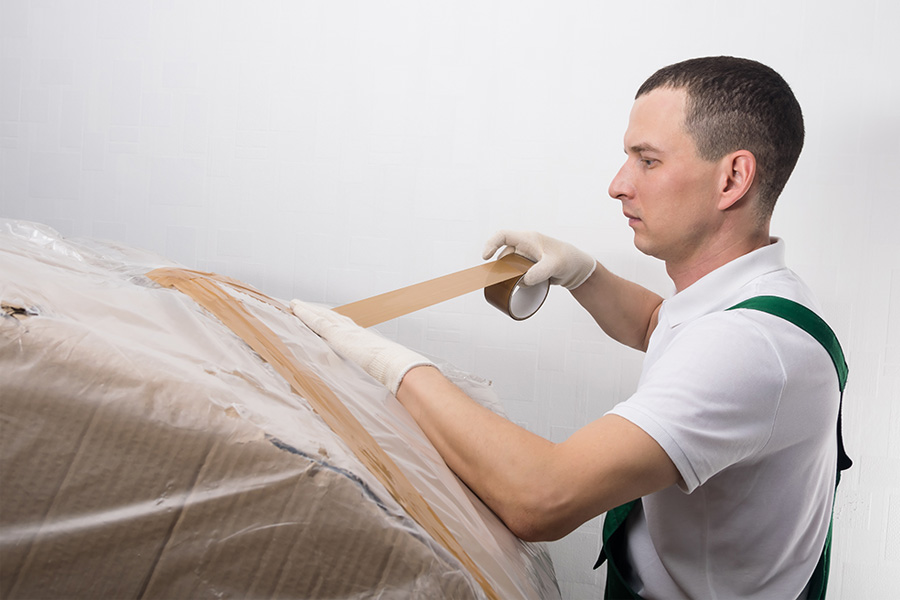7 tips for packaging large or awkward items

Packing and shipping heavy, large or awkward items can be challenging. There is a reason to do it though – good packaging means less damages to your products, fewer returns and happier customers.
When it comes to packaging heavy, large or awkward items, there is much to consider, including using stronger more protective packaging than for standard goods, since heavy items particularly are usually moved by forklift rather than people. Plus, they may switch between multiple trucks and trains as they navigate their way to their destinations.
The onus for suitable packaging rests with the shipper. If your packages are not packed in a way to avoid damage, sometimes inflicted by heavy warehouse equipment, a freight company may refuse to accept it, especially if they think won’t survive the crush of a hydraulic lift or the arms of a forklift.
When shipping packages, know they will take a beating, such as:
- Getting dropped
- Being subjected to vibration from conveyor belts and trucks
- Experiencing compression on all sides from indiscriminate stacking
- Undergoing temperature and humidity changes
7 Tips To Help You Package Parcels Better
Protecting your goods in transit is helped enormously by good, strong packaging. Here are 7 tips to help you:
1) Ship on a proper pallet. Some heavier, large or awkward items are best protected by securing them to a wooden or plastic heavy-duty pallet that is able to withstand the stress of being hauled and lifted. Don’t allow shipments to exceed the weight restrictions of their pallet, according to a Shopify blog called, “Shipping Problems? Get 10 Fixes to the Most Common Fulfilment Challenges“.
2) Choose Durable Packaging. Corrugated cartons are excellent since they are strong enough to withstand the weight of a full load of packages stacked on top of them. Avoid second-hand corrugated card packaging that has been weakened by previous use. Reinforce the packaging strength with water-activated tape. Consider adding extra padding for protection, such as bubble wrap. Add it along the bottom, sides and top of the shipment. Reinforce the bottom of the box with extra layers of tape.
3) Wrap and cushion the items. Always place items in the centre of the box so they don’t tilt when they are being carried. Surround them with a thick layer of bubble wrap for more product protection. Fill in any empty spaces inside the box. Crumpled newsprint or packing paper compresses during shipment, so it’s not suitable. Make sure nothing moves inside the shipment. The heavier the item, the more likely it will shift within its carton.
4) Add another box. Sometimes adding a box inside another box helps with protection. Slip the packed box into another box that is larger than the first and pad the empty space with bubble wrap or air pillows. Depending on the item, you want to leave at least two inches of clearance between the inner and outer boxes. Really fragile items like heavy vases will require more clearance. You may even consider wooden crates. Ultimately, ask yourself if your packaging provides adequate cushioning to protect the item in case it is dropped or punctured. If the answer is no, you need to add more protection.
5) Seal the box with water-activated tape. For heavier items, choose fiberglass reinforced water-activated tape for extra protection. Water-activated tape actually bonds to a corrugated shipping box, protecting it from opening during transport. Using tape that is not designed for packing probably won’t protect the box from opening during transit or may allow pilfering during the trip.
6) Avoid making boxes too heavy. If a shipment is heavy, and if it’s possible, consider breaking it into multiple boxes and wrapping individual components separately. The heavier the carton, the more likely it will break in transit and be a greater OSH risk to people lifting it.
7) Give it a shake. Once your package is sealed, shake it. Can you hear anything rattling around or moving? If yes, you need to repack it. Anything that moves might damage other fragile items and crush packaging material.
As heavy, large or awkward items move through the supply chain, they are prone to damage. By spending extra time and effort to properly package them, they will be better able to withstand the vagaries of fork lifts, conveyor belts, transfers between multiple trucks and the challenges of over-the-road transit. That means fewer damaged goods and returns and, in the end, customers who more likely to purchase from you again.
Ready to take your eCommerce store to the next level? Get in touch with our 3PL team for a custom quote to handle your online order fulfilment and logistics.

